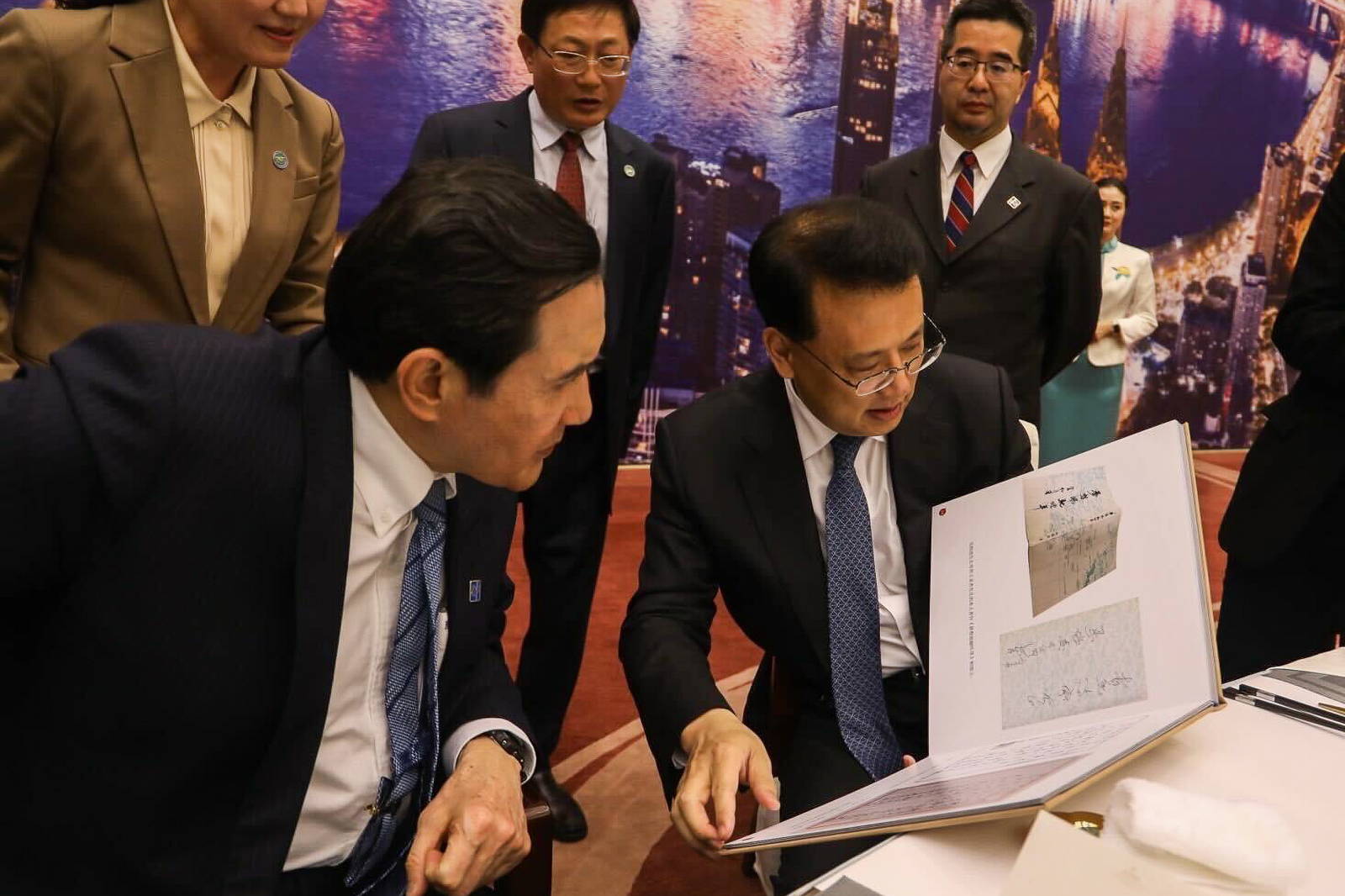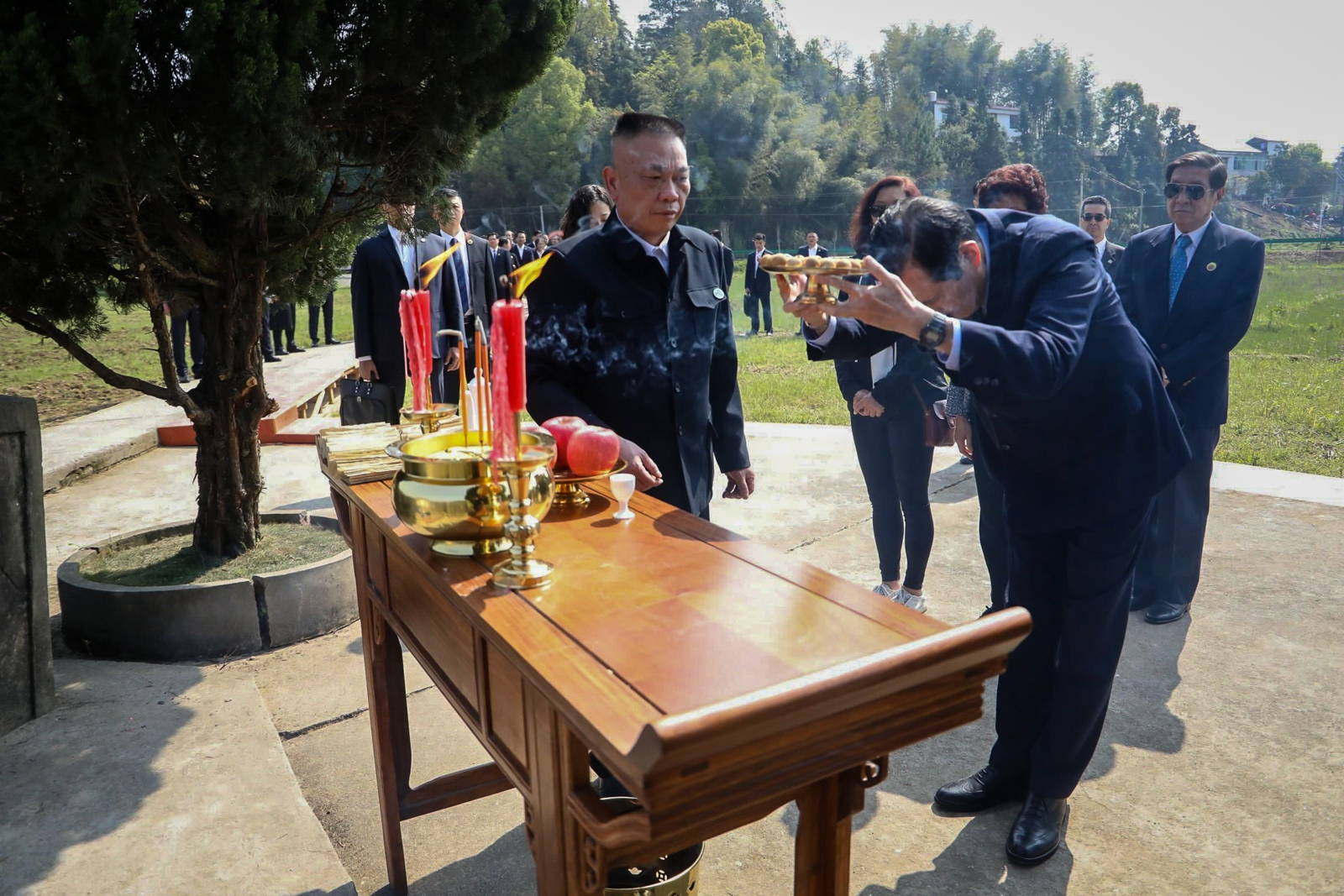Ma Ying-jeou’s China visit opened a Pandora’s Box

Source:Ma Ying-Jeou's office
Former President Ma Ying-jeou’s visit to China triggered massive domestic debate in Taiwan, prompting supporters of the ruling Democratic Progressive Party (DPP) and the main opposition Kuomintang (KMT) to harden their stances toward China. The stalemate between the governments on both sides of the Taiwan Straits as well as between the green and blue camps in Taiwan is hard to break given Taiwan’s political reality.
Views
Ma Ying-jeou’s China visit opened a Pandora’s Box
By Shu-ren Kooweb only
With his visit to China, Ma, who was president of the Republic of China (ROC) on Taiwan from 2008 to 2016, rekindled heated public debate over the nation’s relationship with China. He was the first ever Taiwanese leader to visit Mainland China since 1949.
When it comes to the term “Republic of China”, Taiwan’s green (DPP) and blue (KMT) political camps have their own interpretations of what is meant;, there is no common ground. Beijing observes these differences coldly as a bystander. That incumbent President Tsai Ing-wen visited the United States during stopovers to and from Latin America as Ma toured China only further cemented the existing perceptions that the KMT, DPP and the Chinese Communist Party have about each other. Against this backdrop, the debate was not helpful for breaking the stalemate between the blue and green camps, the DPP and the CPC, or the two governments on both sides of the Taiwan Strait.
Embracing his cherished Republic of China ideal, Ma went to China as a lone fighter, like the last Don Quixote. Yet, he will hardly be able to change the direction of the giant wheel of history.
Ma’s way of publicly describing the Republic of China while on Chinese soil could be called unprecedented. His statements took even the China hands within the blue camp by surprise.
Most representative were his remarks in a meeting with students at Hunan University in which he clearly explained how the Constitution of the Republic of China defines the cross-strait relationship.
“We amended our Constitution in 1997. In our definition, our country has been divided into two parts, one is the Taiwan area, and the other is the mainland area. Both are part of our Republic of China, both are China,” Ma said. The former president further explained how Taiwan and the Chinese mainland are defined in the Act Governing Relations between the People of the Taiwan Area and the Mainland Area promulgated in Taiwan in 1992. He pointed out that Article 2 of that Act states "the Taiwan area" refers to Taiwan proper, and the island groups of Penghu, Kinmen, and Matsu, while "the mainland area" means "our territory" excluding Taiwan and its offshore islands. “Be it Taiwan, be it the mainland, under the Constitution of the Republic of China both belong to one China. We are the Taiwan area, you are the mainland area,” Ma said.
“I was shocked; this is a stronger version or Version 2.0 of ‘one China with different interpretations’,” notes political scientist Chao Chun-shan, who was a key cross-strait policymaker during the Ma administration, and now is an honorary professor of China Studies at Tamkang University.
Chao explains there used to be a tacit understanding between China and Taiwan that each side would state their own definition of “one China” only in statements to domestic audiences. While there is no cross-strait consensus as to what constitutes one China, neither side would negate the other side’s interpretation. More importantly, neither side would publicly state their own definition on the territory of the other side.
“I am sure that no one in Taiwan would be able to accept if officials from Communist China lectured them on their People’s Republic of China (PRC) while visiting Taiwan,” says Chao. He said it is quite intriguing that Beijing this time tolerated that Ma repeatedly publicly spoke of the Republic of China and the Taiwan president without reacting to his statements at all.
You Ying-lung, chairman of the Taiwanese Public Opinion Foundation, considers Ma’s statements as an affront. “This is like eating pork in front of Muslims;, it is a deliberate provocation.”
Chao, pointing to his experience from decades of China studies and countless encounters with Chinese officials and scholars, believes that ethnic identity plays a key role here.
During his visit to China, Ma kept talking about the Chinese people, Chinese culture, and commemorated the Chinese revolution and the war of resistance against Japanese aggression. At the Sun Yat-sen Mausoleum, he said the Chinese on both sides of the Strait need to jointly strive to revitalize China, using wording that means China in a cultural rather than in a national sense. At Hunan University, he told the students: “We are not only of the same culture and ethnicity, we both uphold the interests of one China.”
“Beijing cares most about the Chinese heart, nationalist sentiment. If you belong to the family, everything can be discussed,” says Chao in summing up the mindset in Beijing. He says that’s the reason why Beijing allowed Ma to travel everywhere.
This is also the key point why the DPP and the CPC are not able to sit down for discussions to solve the current stalemate in official cross-strait relations.
 (Source: Ma Ying-Jeou's office)
(Source: Ma Ying-Jeou's office)
All the criticism that President Tsai Ing-wen, the Mainland Affairs Council and the DPP leveled against Ma’s statements in China only highlighted that the DPP, while having embraced the Republic of China, clearly defines it differently than the KMT. On top of that, it does not believe that the people on the other side of the Strait belong to the family.
On April 6, Tsai told journalists during her stopover in the United States: “It is a clear fact now that the Republic of China and the People’s Republic of China are not subordinate to each other,” reiterating the cross-strait stance she declared in her National Day address in 2021.
Chan Chih-hung, deputy minister of the Mainland Affairs Council, explained at the same news conference that the Tsai administration recently keeps reiterating that “the Republic of China and the People’s Republic of China are not subordinate to each other” because Beijing again and again claims that Taiwan is a part of the PRC. “China has always used the one China principle as a basis for annexing Taiwan, to wipe out the Republic of China,” Chan said.
KMT Chairman Eric Chu criticizes that the DPP’s Republic of China is “Taiwan’s Republic of China”.
But the DPP’s wording only reflects the fact that Beijing has monopolized the right to represent “China” and Chinese culture in the international sphere; it reflects the cross-strait political status quo, and the domestic political realities in Taiwan.
In the eyes of Beijing, the Republic of China became history with the founding of the PRC in 1949. After the PRC took over the ROC’s seat in the United Nations in 1971, the PRC became the only legal government of China. When China is mentioned in an international context, everyone perceives this as the PRC.
As a result, the people of Taiwan do not want to be lumped together with the Chinese anymore. The surveys on Taiwanese identity by the Election Study Center of National Chengchi University shows that only around 30 percent of the Taiwanese identify as Taiwanese and Chinese, whereas sixty percent identify as Taiwanese.
Given this political reality, the KMT can only embrace Ma’s Republic of China reasoning, while distancing itself from the “Chinese identity”. This is particularly the case for the younger generation of blue camp politicians. Even if the KMT regains power in 2024, it will not go against the will of the people. Amid increasing competition between China and the United States in international affairs, it will become more difficult for Taiwan to say “No” to a U.S. administration that seeks to pull Taiwan closer to its side to counter China.
This is the scenario that Chao fears most.
 (Source: Ma Ying-Jeou's office)
(Source: Ma Ying-Jeou's office)
As he sees it, Ma’s China visit has forced Taiwan’s blue and green political camps to put their cards on the table, regarding their perception of cross-strait relations. China, for its part, used Ma’s visit to convey a clear message to the Taiwanese: As long as the family does not split, the cross-strait relationship is characterized by an internal contradiction that can be discussed. “If this turns into a contradiction between the enemy and us, a race or clan that is not us, then there is no give and take.”
Chao describes the near future as follows: “The Pandora’s box has been opened. Whether there is light at the end of the tunnel or coming events cast their shadow depends on the results of the 2024 elections.”
Given these political realities, Chao feels sorry for Ma, whom he feels “ is like Don Quixote.”
Have you read?
- China vs. Taiwan: The battle for diplomatic allies
- Richard Bush: US and Taiwan must work together to deter China
- Taiwan Defense Minister: China won't take Taiwan in a fortnight
Translated by Susanne Ganz
Edited by TC Lin
Uploaded by Ian Huang






